What’s new


-
Ref. C312d RIGHT CELL MINI INTERLOCK, Ref. C312d


This interlocking system is completely combinable with any item in our catalogue – it can be added to an interlocking sequence with other lock types.
In electrified premises without power, this interlock type prevents from manipulating any electric device (disconnector, switch, etc.) and leaving it open (doors, fences, etc.) until the manoeuvre is finished, i.e. when access is closed.
This lock is designed for an easy surface mounting on left hinged doors.
An HERPE lock is placed in an access gate (door, fence, etc.), implementing an interlocking sequence that can include a regular HERPE lock (ref.N101) on a switch or disconnector; a switchgear cabinet with an HERPE lock (ref.201); a solenoid commutator (ref.CS701) or a key selector (ref.A402), with the same key code as in the previous examples given. When the movable part of the access gate (door, fence, etc.) is open, the key stays trapped in the lock (ref.C301) and cannot be released until the gate is completely closed.
Características
Door open: Key trapped - Key can't be removed | Door closed: Key released - Key can be removed
-
Ref. C312i LEFT CELL MINI INTERLOCK, Ref. C312i


This interlock system is completely combinable with any item in our catalogue – it can be added to an interlock sequence with other lock types.
In electrified premises without power, this interlock type prevents from manipulating any electric device (disconnector, switch, etc.) and leaving it open (doors, fences, etc.) until the manoeuvre is finished, i.e. when access is closed.
This lock is designed for an easy surface mounting on right hinged doors.
An HERPE lock is placed in an access gate (door, fence, etc.), implementing an interlocking sequence that can include a regular HERPE lock (ref.N101) on a switch or disconnector; a switchgear cabinet with an HERPE lock (ref.201); a solenoid commutator (ref.CS701) or a key selector (ref.A402), with the same key code as in the previous examples given. When the movable part of the access gate (door, fence, etc.) is open, the key stays trapped in the lock (ref.C301) and cannot be released until the gate is completely closed.
Características
Door open: Key trapped - Key can't be removed | Door closed: Key released - Key can be removed
-
Ref. C320 DUAL KEYBOLT CELL INTERLOCK, Ref. C320

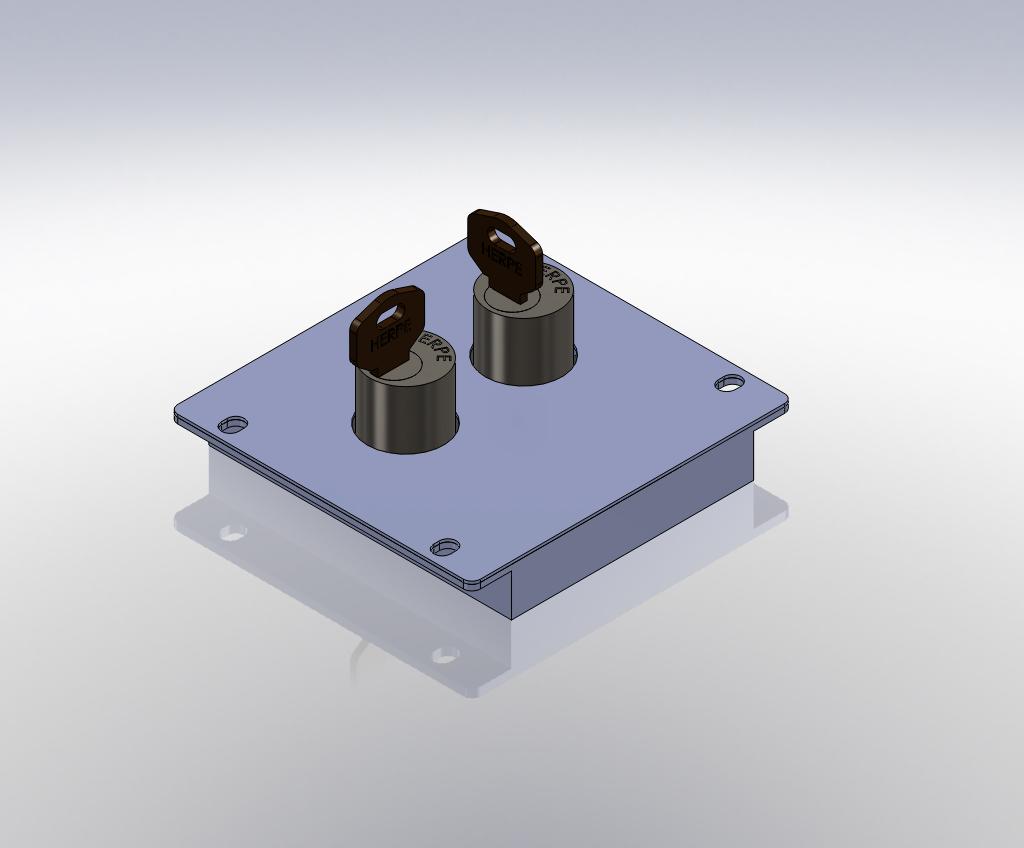
When the door/access (to a cell, for instance) is closed, the upper key stays trapped while the lower cylinder is empty. As the lower key is inserted and turned, the door/access can be opened. As long as it is open, this key will stay trapped. In order to continue with the interlocking sequence, the upper key needs to be released. The lower key won’t be able to turn and lock the door until the upper one is inserted and trapped.
Características
Door closed: Lower key free, upper key trapped | Door open: Lower key trapped, upper key released
-
Ref. C330 TRIPLE KEYBOLT INTERLOCK, Ref. C330


When the door/access (to a cell, for instance) is closed, the upper keys stay trapped while the lower cylinder is empty. As the lower key is inserted and turned, the door/access can be opened. As long as it is open, this key will stay trapped. In order to continue with the interlocking sequence, the upper keys need to be released. The lower key won’t be able to turn and lock the door until the upper ones are inserted and trapped.
Características
Closed door - lower key free: Two upper keys trapped | Open door - lower key trapped: Two upper keys released
-
Ref. C823 CYLINDER INTERLOCK, REF. C823


When a mechanical block manoeuvre actioned by a key is required in order to start the interlocking sequence, it is advised to use an cylinder interlock.
The key is trapped if turned at 90º. Turning the key at 0º position, it is released and the contacts are inverted.
The interlock cylinder, as every item in our catalogue, is completely compatible with the rest of our articles. As the same key format can be used, it could be utilized in any interlocking sequence even if it is composed by more items.
Características
Key at 0º: Key released | Key at 90º : Key trapped
-
Ref. CA201 KEY LOCK SAFE-PADLOCK, Ref. CA201

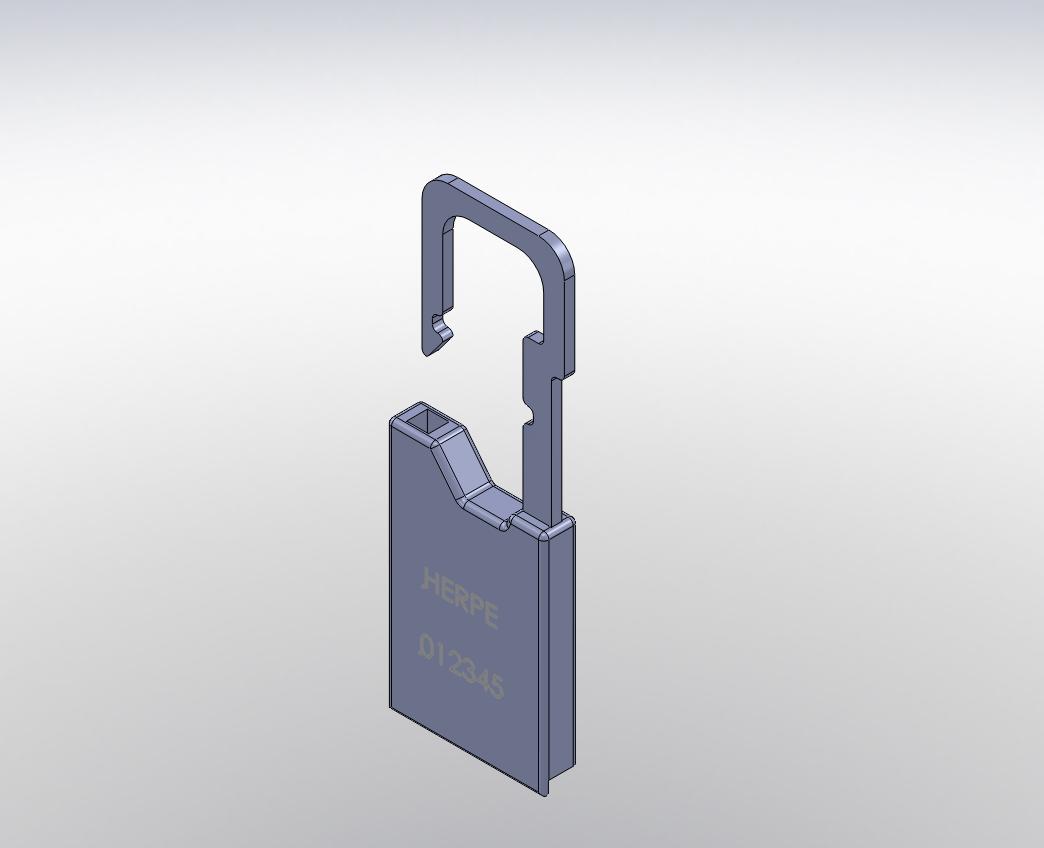
There can be different types of keys with different profiles that need to be integrated in order to get a single key. This article helps to do so, with complete control of the key and padlock. The key lock safe-padlock has a code printed on it that is linked in our records to the code on the key. In case of handling the devices (breaking the padlock in order to remove both keys and replacing it later with another padlock) in the event of an accident, the codes on the padlock can help knowing whether the device was previously manipulated.
Características
Padlock open : Keys can be brought in | Padlock closed: Keys cannot be removed
-
Ref. CA401 MECHANICAL LOCKING SYSTEM Ref. CA401

This interlock is designed to prevent the activation of a body opening a circuit (e.g. a switch). It consists in a sign and the immobilization through mechanical locking of the activation body.
The interlock padlocks, together with expert handling (installation and removal by a professional, the consignment technician), secure the performance of this function.
The padlocks are made of brass, which prevents from corrosion. A plastic sheet representing an interlocking disc is included.
Anti-corrosive padlocks.
Plastic sheet.
Red colour – sign of prohibition.
Labelling on both sides:
– Operation-forbidden normalized sign.
– User details and name labelling zone.
Weight: 0.17 Kg.
Bolt diameter: 4mm.
Bolt length (mm): 70.
Key code or number: 111.222.
00: Non-standard.
Z: Random key
Características
:
-
Ref. CG901 SINGLE CONTACT COMMUTATOR (1NA+1NC), Ref. CG901

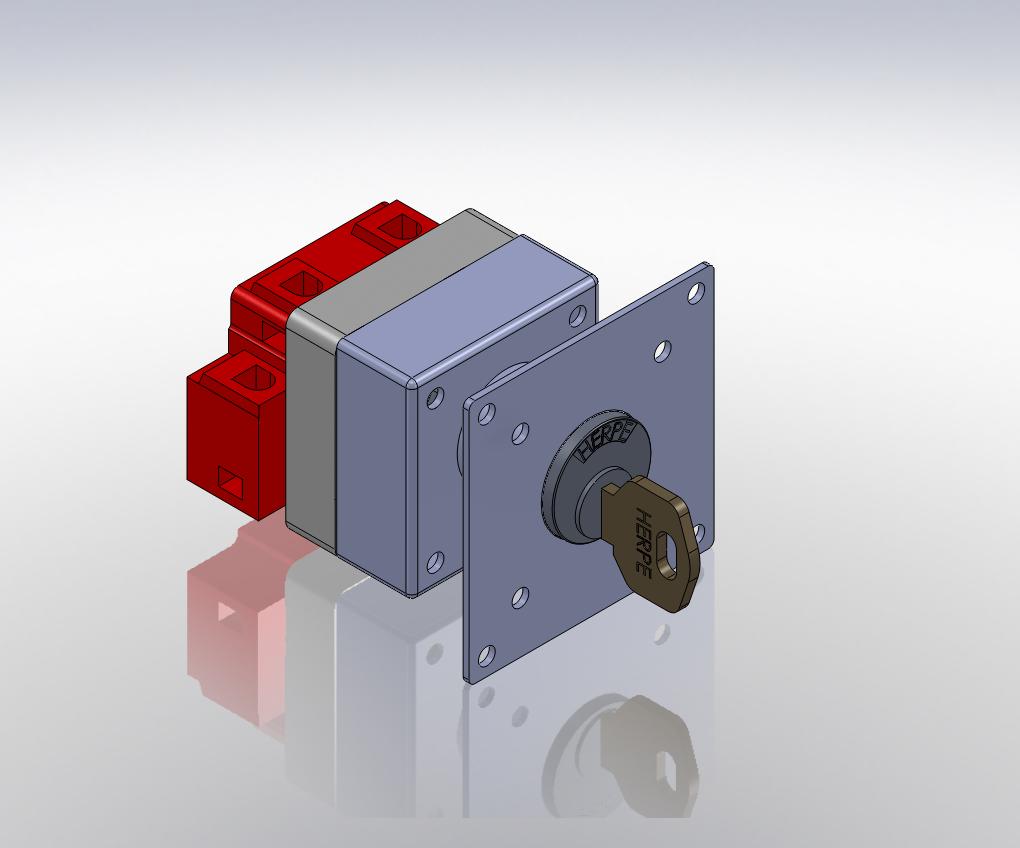
When a mechanical interlocking sequence requires the addition of an electric component, that should be done using a key-activated commutator The commutator can have several uses: machine activation, electric cabinet, etc.
When the key is at 90º, it is trapped and one of the contacts is open and the other is closed. Turning the key at 0º position, it is released and the contacts are inverted.
The switchboard, as every item in our catalogue, is completely compatible with the rest of our articles. As the same key format can be used, it could be utilized in any interlocking sequence even if it is composed by more items.
Características
Key at 90º : Trapped | Key at 0º : Released
-
Ref. CG902 DOUBLE CONTACT COMMUTATOR (2NA+2NC), Ref. CG902

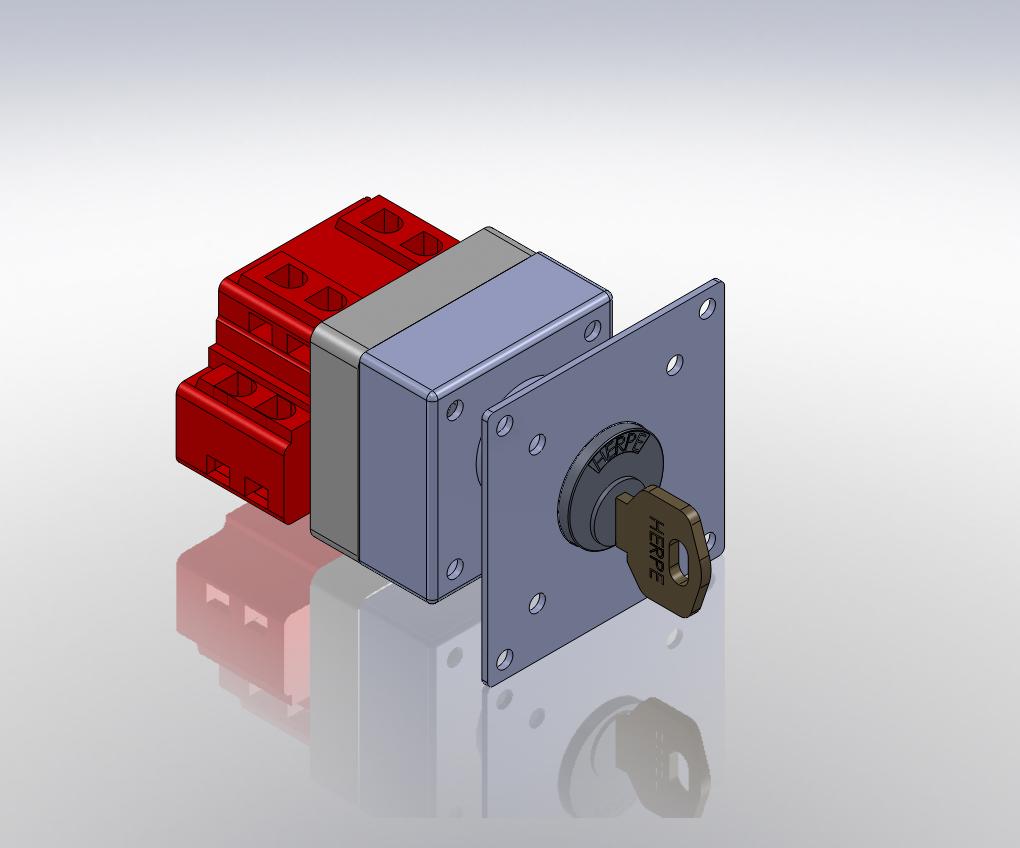
When a mechanical interlocking sequence requires the addition of an electric component, that should be done using a key-activated commutator The commutator can have several uses: machine activation, electric cabinet, etc.
When the key is at 90º, it is trapped and one of the contacts is open and the other is closed. Turning the key at 0º position, it is released and the contacts are inverted.
The switchboard, as every item in our catalogue, is completely compatible with the rest of our articles. As the same key format can be used, it could be utilized in any interlocking sequence even if it is composed by more items.
Características
Key at 90º : Trapped | Key at 0º : Released
-
Ref. CG923 CYLINDER WITH ELECTRICAL CONTACT, REF. CG923

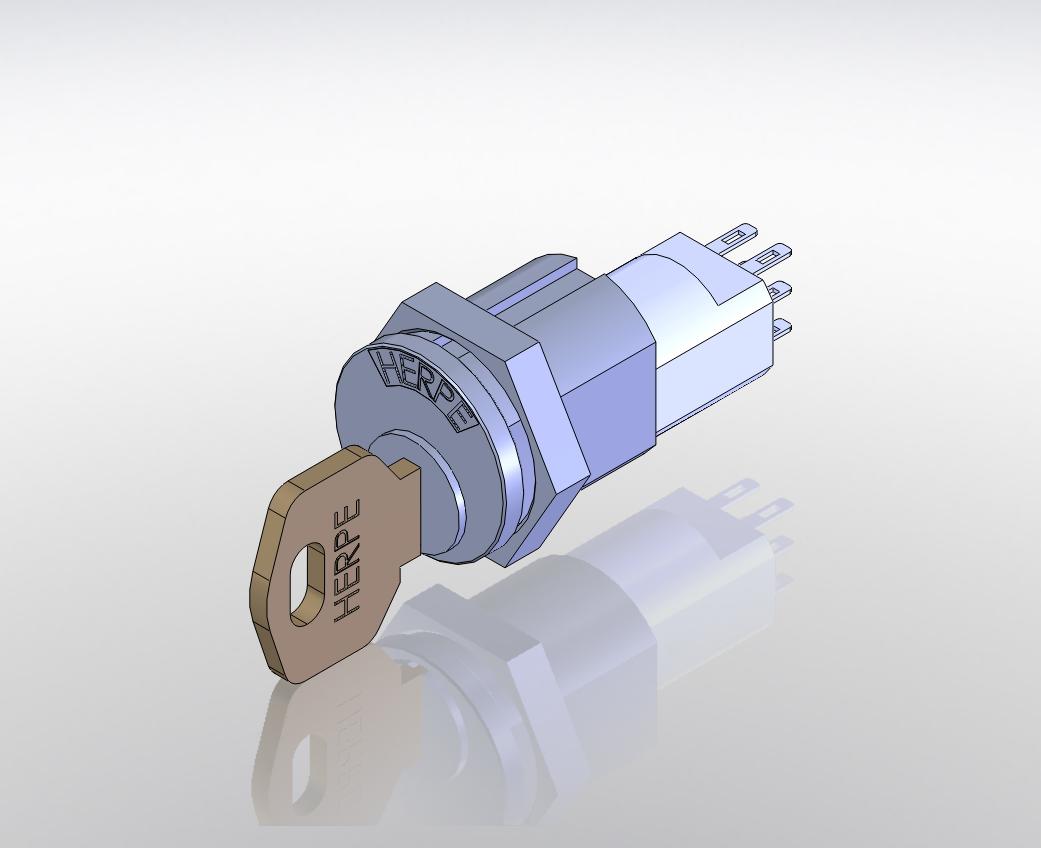
When a mechanical interlocking sequence requires the addition of an electric component, that should be done using a key-activated commutator The commutator can have several uses: machine activation, electric cabinet, etc.
When the key is at 90º, it is trapped and one of the contacts is open and the other is closed. Turning the key at 0º position, it is released and the contacts are inverted.
The switchboard, as every item in our catalogue, is completely compatible with the rest of our articles. As the same key format can be used, it could be utilized in any interlocking sequence even if it is composed by more items.
Características
Key at 90º : Trapped | Key at 0º : Released


